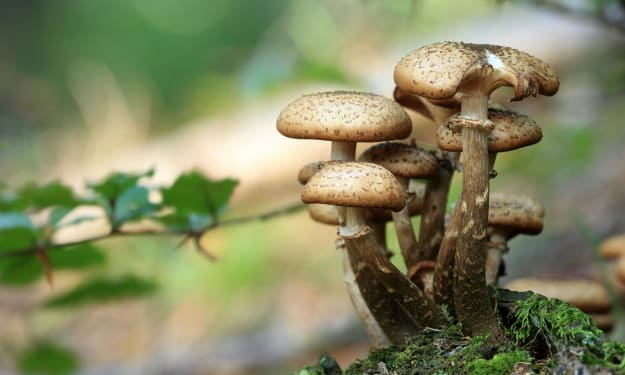Taking a second look
Timing is critical when reporting smoke, but taking time to ensure your information is correct, might cost lives.

Summertime in Southern California can conjure up images of warm weather, days at the beach, cookouts, and endless amounts of great memories. This is also true for those who venture into the San Bernardino National Forest. A region that encompasses 660,000 acres of the San Bernardino Mountains with elevations ranging from 1,000 feet to the highest at Mount San Gorgonio at 11,502 feet.
Each summer, over 300 men and women volunteer to staff the 7 historical fire lookouts covering this national forest. These volunteers are trained to spot wildfires during the fire season and welcome guests to the tower lookouts. In essence, they, along with more modern digital surveillance equipment, become the eyes of the forest.
These seven historical lookout towers offer majestic views, solitude, quiet, and heroic vigilance. They also provide visitors a unique glimpse of history that is rapidly disappearing.
As you can imagine, each tower and each volunteer have many stories to tell. From spotting and reporting fires, dealing with lighting storms, wildlife encounters, Unusual situations with visitors, and a host of other topics, which makes staffing a tower a most satisfying and rewarding experience.
In that regard, the story below relates to an unusual situation I experienced during my time as a volunteer.
Take a second look:
It was another Saturday morning. We have been experiencing cooler mornings before the noonday sun heated up the area. This provided a clearer sky than the standard marine layer coming off the Pacific Ocean some 80 + miles away, which we usually had to deal with.
Opening my assigned tower requires more than just climbing up the 40 feet to the catwalk around the tower cab and unlocking the door. I am required to take various weather readings, i.e., temperature, humidity, wind speed, and direction, and perform a radio check. All this information is logged down in a tower log and also reported back to base headquarters. Once these steps and raising the American flag are completed, the tower is considered officially staffed and operational.
Anyhow, I took my first complete 360-degree scan of the area through binoculars, and in an instant, what started as a calm routine morning opening changed when I spotted smoke rising from outside the forest area.
Our training and my past experience taught us not to jump the gun when this situation arises. Detailed information using a device called an Osborne Fire Finder is used to find the smoke's azimuth, the directional bearing. I also had to describe the characteristics of the smoke. This would include the color, the size, the amount of spread.
I quickly collected the necessary information. Focusing on this smoke. I saw that it was small in size but building. It was gray/white in color and drifting towards the southeast. The fire finder indicated nearby landmarks that I needed to provide to dispatch, so helicopter or fire crews could quickly pinpoint the location and respond.
I must admit that my adrenaline was rushing. It might sound childless in a way, but there is some excitement and personal satisfaction when you get to call in a smoke report and hopefully prevent a significant spread from happening. After all, that was one of the reasons why people volunteer. We love the forest, and we feel a responsibility to it and for the safety of the people who come to enjoy it.
By now, the haze was drifting in off the ocean. The location was a few miles away, and these elements were affecting my clear view. Thus, I decided to go outside on the catwalk and double-check my information before calling it in.
The smoke came from a pile and close to a tree line, with a road running alongside. On the opposite side of the road was an open field that swept up the valley. If that caught fire and took off, the situation could quickly become severe, and there were homes close enough that evacuations might become necessary. Timely reporting was becoming critical.
The smoke was still rising in the morning air, but this last look also focused on the buildings nearest to the location. These buildings were long, narrow, single-story factory-like structures with shiny metal roofs. My observation also noted a tractor-like vehicle parked on the side of one of the buildings.
I'm sure a large smile crossed my face as I lowered the binoculars, and my smoke report to base was never called in.
You see, the buildings sure looked like those you find on a chicken ranch. The pile that was smoking was none other than chicken_______.
Yep, that wasn't smoke that I was seeing. It was steam!
Thank God I was upwind, and thank God I didn't jump the gun and call in that smoke report when I first noticed it. I could just imagine a police car or a helicopter going to the location and then reporting back that there was nobody there except some chickens.
With that change in the situation, I went back inside and continued scanning the forest area.
As for that pile of chicken______, as the sun warmed up the morning, the stream faded away.
Still, if nothing else, that event drove home the lesson of making sure to take a second look.
About the Creator
Jack Dietz
Hello
I’m a 68-year-old Vietnam Veteran living in Southern California.
My writing started due to my volunteered to work as a Fire Lookout. I hope you enjoy my stories and will always welcome any feedback at [email protected]






Comments
There are no comments for this story
Be the first to respond and start the conversation.